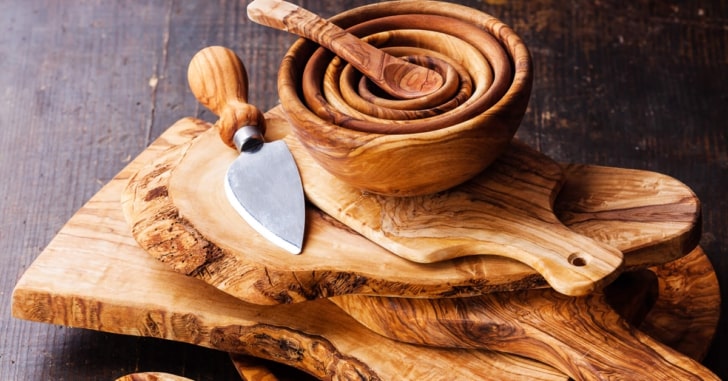Home
5 Facts That Makes Olive Wood the King of Kitchenware and Decorative Pieces
Neither the sacred trees nor the trees known for their hardness do not lose their importance.
From wood to lumber, from lumber to lumber and finally to furniture or fossil fuel – they serve a purpose to us.
But when it comes to olives, both the timber and the fruit are equally important. In fact, we are so obsessed with reading about the benefits of olives that their magnificent wood is ignored.
Therefore, today we will shine a light on someone other than Olive Wood. Keep reading because after reading you will have a lot to tell about this tree.
Let’s start!
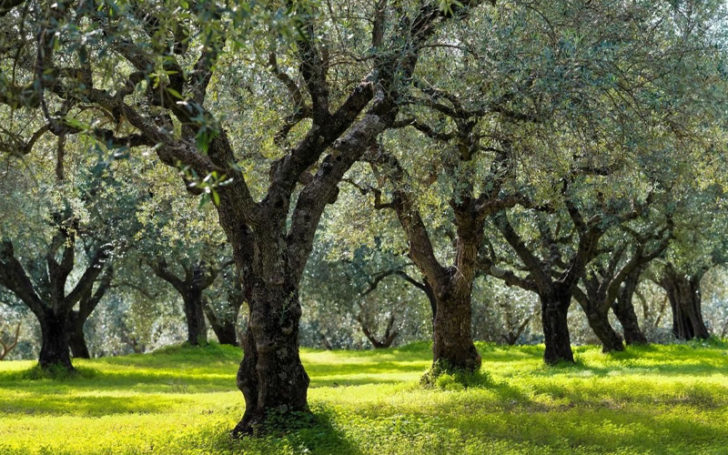
Table of Contents
1. Olivewood Is An Exotic Wood with Unique Features
The wood obtained from its tree is also famous, as olives and olive oil have a prestigious place when it comes to healthy nutrition.
Let’s see what the olive tree is.
What Is Olive Wood? How To Identify Olive Wood?
Olive wood is a cream to golden wood obtained from olive trees (Olea europaea) with smooth, interconnected or large patterned grains, fine uniform texture, natural luster.
It is native to Southern Europe, East Africa, and the Middle East.
It is one of the hardest woods, famous for making high-quality utensils, religious writings, small furniture, or simply kept as blanks for decoration.
What’s Unique About Olive Wood (Olive Wood Properties)?
- It is a sustainable tree – instead of cutting down century-old trees, only branches are pruned using a hand-held circular saw.
- It is a hard-to-dry wood that often warps if not dried by a slow drying method such as kiln drying.
- It has a fruity scent when chopped and worked on.
- The color changes from yellowish-brown to dark brown as the tree ages.
- Logs or olive tree timbers are not very large as the average olive tree height is 20-30 ft.
- Olivewood is not super durable as it cannot withstand termite attacks.
- The olive tree can grow from stumps just as Crepe Myrtle plants do.
- Because the stems are not completely round, the grain pattern mostly rotates.
- Regarding its durability, it is classified between hard and strong woods, although it is less durable than the strong acacia wood.
Types of Olive Woods
We can basically divide olive trees into two types.
Those that grow in the Mediterranean are called Olea Europaea and those that grow in East Africa are known as Olea Capensis.
2. Olivewood Makes High-end Furniture and Kitchenware
- Olive Wood Cutting Board
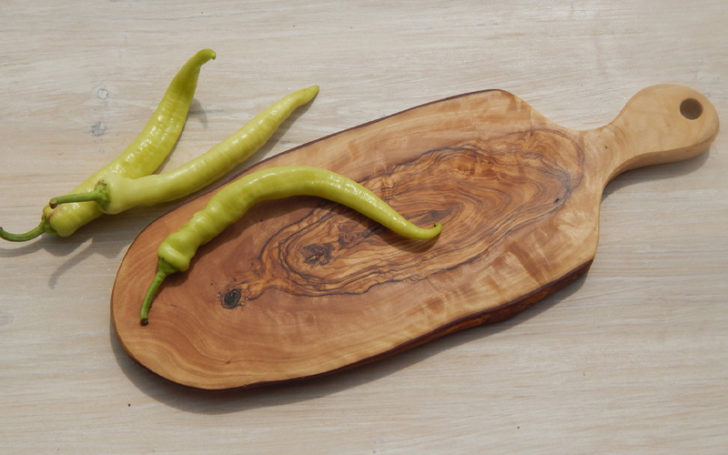
- Olive Wood Serving Bowl
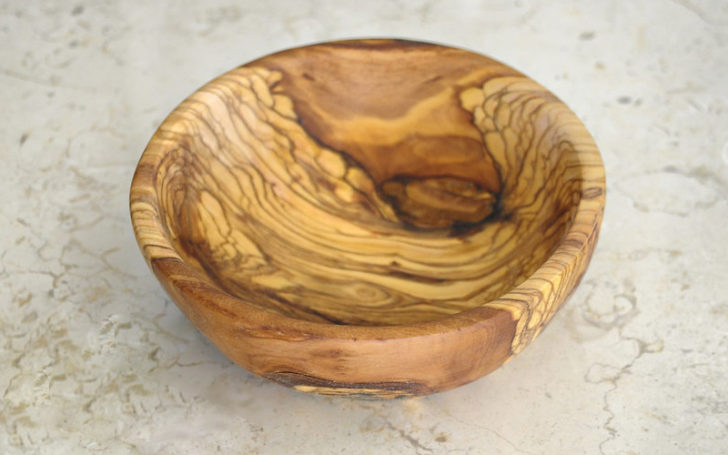
- Olive Wood Coffee Table
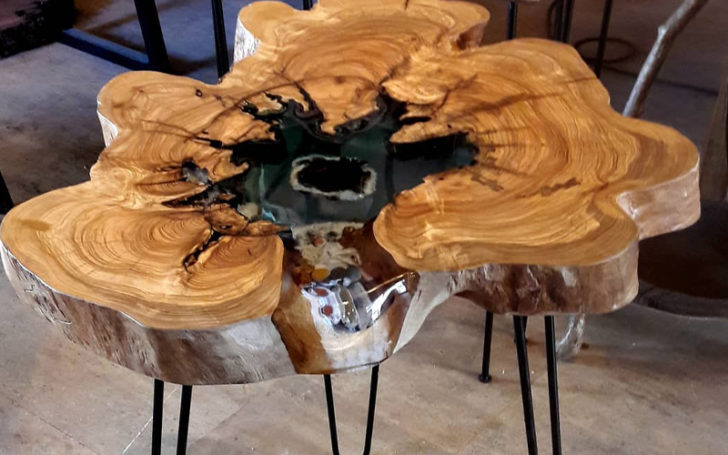
Furniture and utensils made of olive wood are not out of the ordinary. In furniture, beds, cabinets, etc., are rarely found in olive wood.
The wooden items you’ll often see made from olive wood are the small ones, including sculptures, utensils, and decorative pieces.
Here are some of the beautiful furniture made from olive wood.
What is Olive Wood Good for? (Uses of Olive Wood)
Furniture made of olive wood is not out of the ordinary. On the contrary, it is quite expensive due to the beauty of its grains, its hard-to-break property and its less porous nature.
You can’t see it because large furniture items made of olive wood are expensive.
The most common wooden items made from olive wood are utensils – especially cutting boards, bowls and carving spoons – decorative items, small dressers, tool handles, jewelry and hand-carved items.
Why is olive wood used to make bowls and utensils? This is because olive wood is more durable than most other woods and is stain and odor resistant.
However, on the dark side, it is prone to termite attacks.
The Janka hardness test scores olive wood with a score of 2700 lbf (12,010 N) – a test to measure a wood sample’s resistance to threading and abrasion.
A Janka Hardness rating of 1000 or higher is considered acceptable for any wood that will be used in harsh locations such as flooring.
3. Olive Wood Is Considered Holy
In addition to the primary use of the olive tree, it is considered sacred according to some celestial inscriptions.
What does the olive tree symbolize? Compiling ancient scriptures, religious texts and the history of olive trees, we can say that the olive tree symbolizes peace, livelihood, the tree of life, beauty, longevity, heritage and healing.
In the Bible, olive trees are symbolized as fertility and prosperity. In the Old Testament it is referred to as a symbol of peace, referring to the story of Noah.
According to the Bible, it was the freshly plucked olive leaf that the dove brought before Noah sent him to find out if the water had subsided—this signifies the end of God’s anger.
What is Bethlehem Olive Wood?
- Olive Wood Hand-made Holy Scriptures
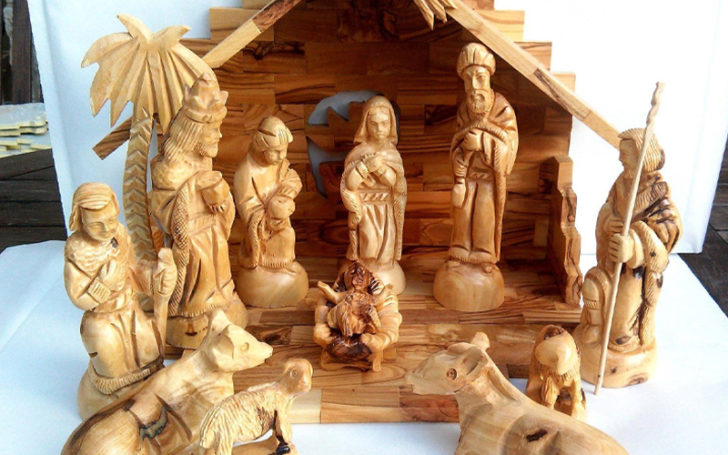
- Olive Wood Hand Made Cross
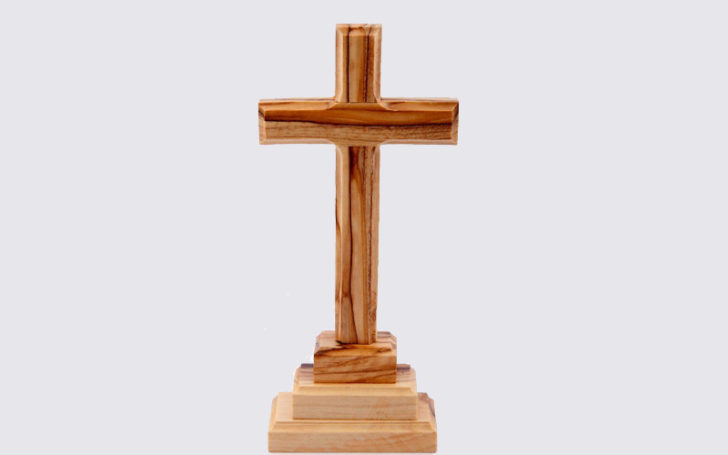
The olive tree is a sacred tree derived from some of the oldest olive trees in the city of Bethlehem, the city where Jesus Christ was born and known as the cradle of peace.
Olive trees also grow in other parts of the Holy Land, such as Jerusalem and Nazareth, but the Bethlehem olive tree remains important.
Why? Primarily because Bethlehem has the oldest olive trees. The older an olive tree is, the more granular and smooth texture it has.
Did you know: The oldest certified olive tree is in Greece, believed to be over 2000 years old and, quite surprisingly, still bearing fruit.
Among other reasons, it is believed that Jesus Christ prayed under an olive tree before he was crucified.
Seeing the sacredness of the olive tree, artisans in Bethlehem make religious, historical and artistic articles from the prunes of young olive branches.
4. Olive Wood is Expensive & Needs Due Care
Olivewood is one of the few wood species sold online as pencil blanks, boards, blocks, bowl planks or logs.
And as for the handicrafts of the olive tree, it is very diverse and large-scale. Some are crucifixes and crucifixes, rosaries, jewelry, tableware, tableware, maternity sets, figurines, ornaments, utensils, plaques, etc.
Tips for taking care of the Olive Wood Accessories
Now that you have one of the best crafts or kitchen utensils made from olive wood, it’s time to learn how to care for them.
- Wash with warm water and dry with a lint-free cloth.
- After washing, apply any mineral oil in a thin layer and allow it to dry. Repeat this one more time. (Do it once a month)
- Never put your olive containers in the dishwasher.
- Avoid prolonged soaking in water as this will weaken the wood, causing it to rot or splinter.
5. Olive Wood Stands Out Among Other Woods
Let’s take a look at how olive wood kitchenware compares to other popular woods.
1. Old Wood Utensils
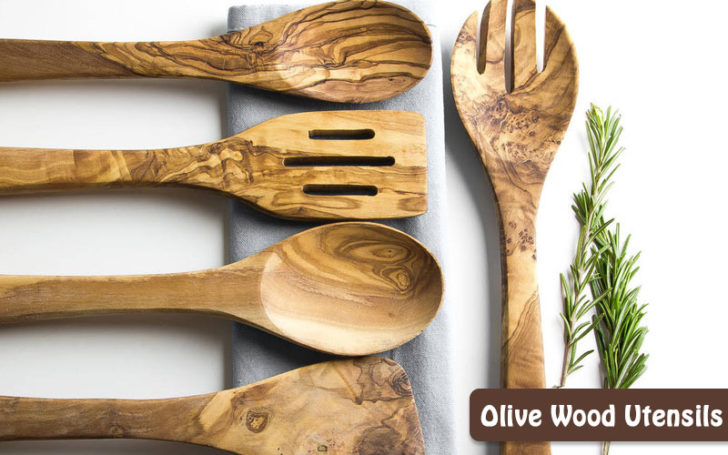
Olive wood is unique, with wavy or curly grains that do not strictly follow a pattern, and that is what makes it beautiful. Take a look at the kitchen utensils below.
2. Acacia wood
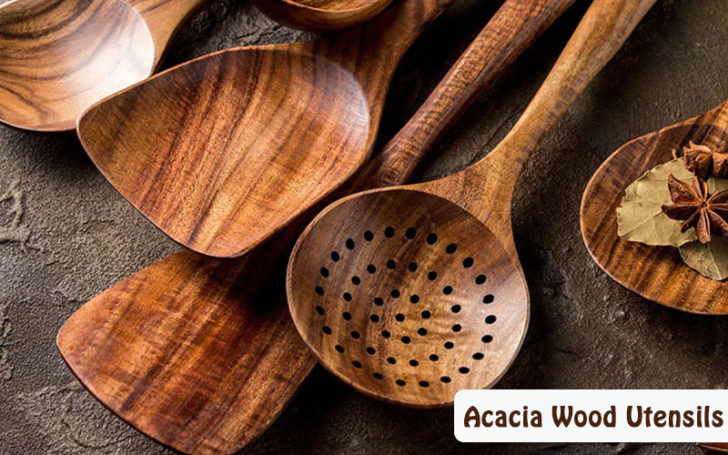
Acacia wood, on the other hand, has many straight uniform grains and most importantly its waterproof and hard-to-break properties make it unique among all other woods.
Take a look at a few of these hardwood spoons.
3. Bamboo Wood
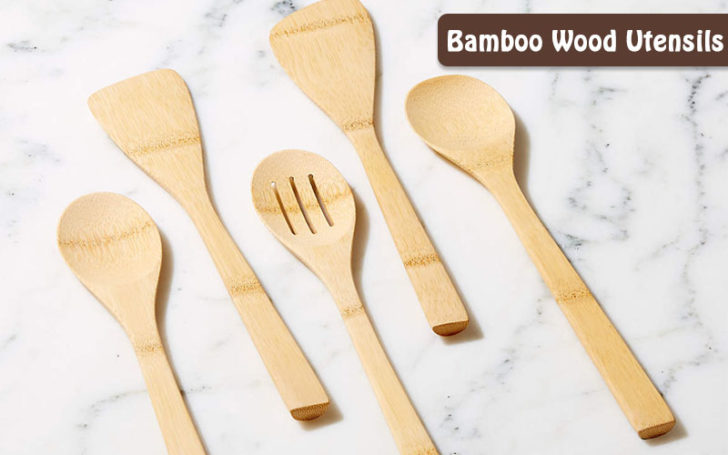
Since it is from the grass family, it has no visible grain patterns or growth rings. The texture is homogeneous and consists of almost straight lines with a slight variation in shade.
It is the cheapest wood in the kitchenware category.
4. Maple Wood
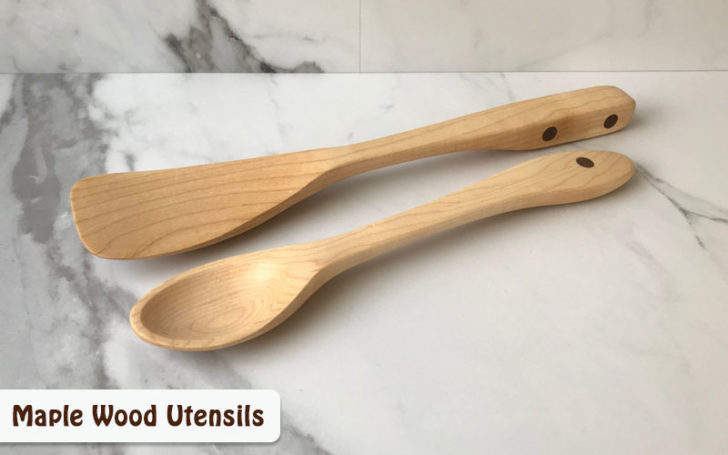
Maple is also one of the hardest woods known to have a fine, uniform texture with straight grain with little variation. The fine line patterns make this wood undeniably beautiful.
Take a look at the following kitchen utensils made from maple wood.
Underline
Known as the hardest trees, the Olive Tree is a symbol of peace, longevity and holiness etc. is symbolized by . Beautiful and messy vein patterns – straight, intertwined or wild – is what makes it highly demanding.
Obtained from the trees of Bethlehem, the olive tree is considered sacred to Christians around the world.
From cutting boards to serving bowls, from small furniture to carved religious writings, olive wood is widely used around the world.
Do you own or plan to buy any products made from olive wood? Let us know your review of this hard and elegant wood.
Also, don’t forget to pin/bookmark and visit our blog for more interesting but original information.

